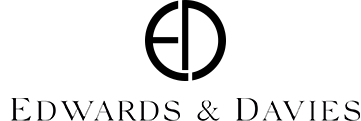CANADA BECOMES 3RD LARGEST DIAMOND SUPPLIER WORLDWIDE
Edwards and Davies
Early Years
During the early years of the 21st century, the diamond industry suffered a considerable slump in worldwide production. The search for available deposits grew desperate as both companies and investors began to withdraw. Due to the high cost of mining, especially in colder climates like Siberia, this lack of financial support painted a bleak future for diamond exploration. Conversely, it was in the shadow of this recession that Canada had been investigating domestic opportunities across the seemingly untouched Northwest regions. This idea was first introduced by Chuck Fipke and Dr. Stu Blusson during the late 1980’s when the duo was convinced diamond-bearing kimberlites were present in an area that had, up to that point, never been considered. After a successful drilling project revealed the first major North American commercial deposit, investors witnessed the largest staking rush in Canadian history.
Initial Stages
Most of the available land was purchased and staked over the next two years. Due to the incredibly high demand and the rate at which investments were growing, companies were marking their territory with helicopters in the interest of saving time. Today, the stakes held by Diavik and Ekati mines are said to have access to three (these three located in Canada) of the world’s six richest kimberlite deposits. With a combined annual production of roughly thirteen million carats these mines contribute over fifteen percent of worldwide diamond supply, estimated to be worth 1.96 billion as of 2012.
Allure of Canadian Diamonds
In addition to the quality of diamonds being unearthed, Canadian reputations have played a significant role in distribution. Unlike Russia and Africa where corporate oversight is minimal, companies in Canada are known to possess high levels of accountability and are subject to many strict environmental regulations. The idea of diamonds which are completely devoid of ethical quandaries gives them an elite status on the international market. As if this socioeconomic standing was not quite enough, Canada became the first government in the world to brand its diamonds. Bearing laser-inscribed tags of polar bears or maple leaves, these diamonds have garnered premiums of five to thirty percent over comparable stones.



